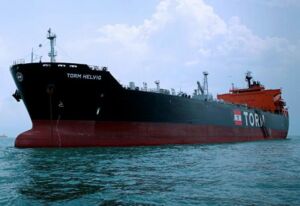News
Torm sailing into brighter seas
This article is more than 10 years old.
More wind in the sails for Dampskibsselskabet Norden too

Restructuring its debt last year looks to have paid off for Torm (photo: Torm)
It wasn’t long ago that the troubled Danish tanker operator Torm was teetering on the brink of financial collapse. But now it seems that the company has surfaced from its brush with Davey Jones’s locker.
In a bid to safeguard its future, Torm agreed in October last year to a restructuring of its debt with a group of its lenders led by Oaktree Capital Management, a major US investor, in a bid to safeguard its future. With the restructuring now in place, the company has made strong strides forward.
“Torm has continued to benefit from the strong product tanker market that prevailed in the first half of 2015 when Torm generated an EBITDA of 100 million US dollars,” said chief executive Jacob Meldgaard.
“I am very pleased that Torm finalised its restructuring on 13 July 2015, as the company’s strong operational platform now has financial and strategic flexibility.” In the second quarter of 2015, Torm realised a positive EBITDA of 47 million US dollars and a result before tax that broke even.
Torm, one of the largest product tanker companies in the world, owns 43 tankers, two dry bulk vessels and operates 53 other vessels.
READ MORE: Torm agrees to debt restructuring
145 and still going strong
In related news, one of Denmark’s oldest existing shipping companies, Dampskibsselskabet Norden, which was established back in 1871, also presented a positive financial result for the second quarter.
Dampskibsselskabet Norden’s EBIT for the second quarter of 2015 was 36 million US dollars – the company’s best result in 14 quarters, or three and a half years.
“Norden has performed well during the first half of 2015,” said its chief executive, Jan Rindbo.
“Our Tanker business has utilised the particularly strong markets to generate its best quarterly operating result ever. At the same time, as a result of good coverage and sound business acumen, our dry cargo business has made it decently through an otherwise historically poor first half-year for the dry cargo market.”










































